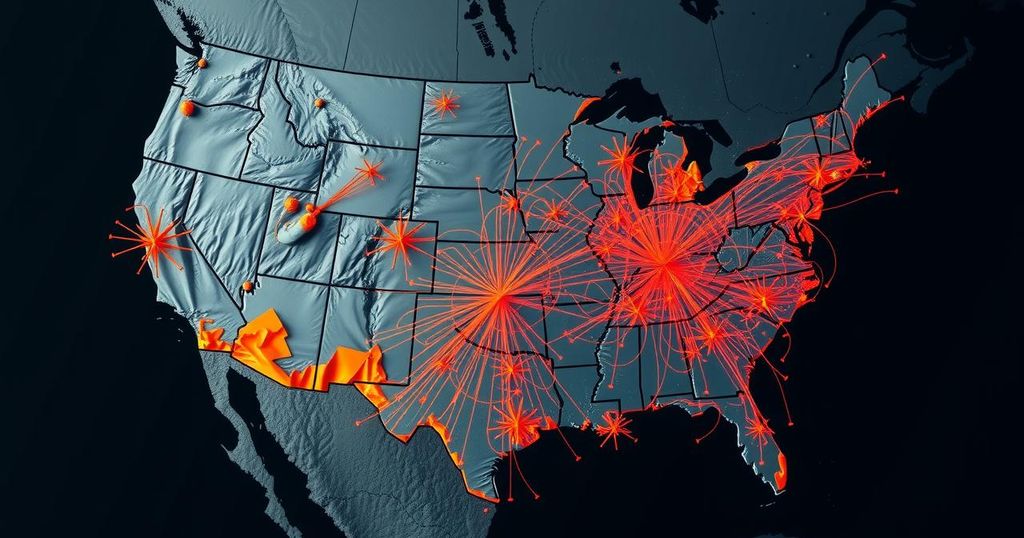The article reports on a 4.4-magnitude earthquake in Borrego Springs, California, on November 7, as observed by the United States Geological Survey. This earthquake was part of a series of global seismic activities, including significant quakes in Greece, Hawaii, and Chile, indicating a pattern of frequent seismic occurrences in various regions.
On November 7, the United States Geological Survey reported a 4.4-magnitude earthquake in Borrego Springs, California, occurring at a depth of 9.8 kilometers (approximately six miles). This event elicited 257 responses from individuals who felt the quake. Notably, this incident followed a series of recent seismic activities globally, including a similarly magnitudinous quake in Greece and another in Hawaii, highlighting the ongoing seismic activity in various regions. Prior to the California incident, on November 5, Greece experienced a 4.4-magnitude earthquake centered in Chalandrítsa, at a significant depth of 82.3 kilometers (about 51.1 miles). Several hours before this, a 4.8-magnitude earthquake struck near Pāhala, Hawaii, at a depth of 38.4 kilometers (approximately 23.9 miles). The California quake was preceded by a 3.3-magnitude earthquake recorded in Anza on November 4, at a depth of 12.1 kilometers (about 7.5 miles). On November 3, multiple seismic events were reported, including a 4.3-magnitude earthquake in La Serena, Chile, and a 3.7-magnitude quake in Steele, Missouri, on the same day. Earlier that week, on October 30, a substantial 6.0-magnitude earthquake occurred in Windsor, Oregon, followed by a 3.2-magnitude event recorded in California the same day. The frequency of these earthquakes emphasizes the importance of monitoring seismic activity across various regions, as earth movements can have significant implications for safety and preparedness. In the days leading up to the significant earthquakes in California and internationally, numerous smaller quakes were recorded, including several in Lompoc, California. These instances included a series of earthquakes on October 24 and 21, ranging in magnitude, which illustrate the persistence of seismic activity in California’s coastal regions. The recent patterns of these earthquakes necessitate continued vigilance and preparation for potential future seismic events.
Seismic activity, particularly in regions prone to earthquakes such as California, Greece, and Hawaii, remains a critical public safety concern. The frequency and magnitude of recent earthquakes are indicative of the ongoing tectonic motions that characterize these areas. Understanding these events helps in raising awareness about earthquake preparedness and the necessary safety measures individuals and communities should undertake. The United States Geological Survey serves as a primary source of information, providing timely data on seismic occurrences and their implications for affected populations.
In conclusion, the series of earthquakes reported in California, Greece, Hawaii, and other locations underscore the persistent nature of seismic activity worldwide. With a variety of magnitudes recorded over a short period, including significant events such as the 4.4-magnitude quake in California and others globally, it is imperative for communities to stay informed and prepared for the possibility of future earthquakes. The data from the USGS serves as an essential resource in understanding these natural phenomena and formulating effective risk mitigation strategies.
Original Source: wjno.iheart.com






